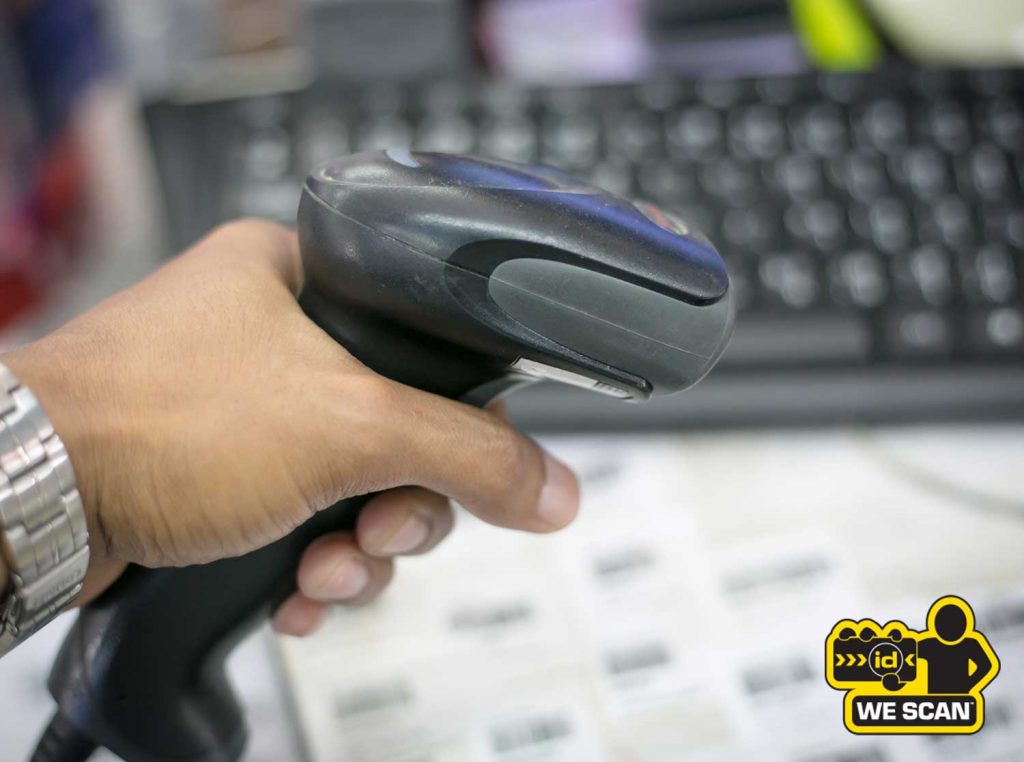
As technology improves, so do the methods used to combat these fake IDs. Modern ID scanners and verification systems are equipped with advanced tools to detect anomalies, verify encoded data, and cross-reference information with official databases. This article delves into the intricate workings of scannable fake IDs, how they bypass verification systems, and the countermeasures employed to detect and prevent their use. By understanding these mechanisms, businesses, and individuals can better protect themselves against the growing threat of counterfeit identification.
What Are Scannable Fake IDs?
A scannable fake ID is a counterfeit identification card designed to replicate the functionalities of a legitimate ID. These fake IDs include barcodes, magnetic strips, and other features that allow them to interact with ID scanners. Unlike traditional fake IDs, which relied on visual deception, scannable IDs incorporate data stored within the card to mimic official documents.
Protect Your Business from Fake IDs
Fake IDs are getting more sophisticated. Stay ahead with our advanced ID verification systems to prevent fraud and ensure compliance.
Don't take risks—secure your business today with reliable ID scanning technology.
Learn More About Our ID Scanners →
How Are Fake IDs Scannable?
Manufacturers use advanced technology to replicate barcodes and magnetic strips, embedding false information. When scanned, these IDs may appear genuine because they mimic real database entries or provide seemingly valid information. Here are some of the methods used to make fake IDs scannable:
- Barcode Replication: High-quality printers and specialized software are used to create barcodes that resemble those on legitimate IDs. These barcodes contain encoded data like names, addresses, and birthdates.
- Magnetic Strip Encoding: Using tools such as magnetic stripe encoders, counterfeiters program the strips with fake but seemingly legitimate data.
- Database Mimicry: Some sophisticated fake IDs include references to fraudulent databases, tricking verification systems into accepting them as genuine.
Evolution of Scannable Fake IDs
In the past, fake IDs were primarily focused on visual mimicry—matching the font, color, and general layout of real IDs. However, as technology advanced, so did the sophistication of counterfeiters. Today, fake IDs are crafted to pass not only human inspection but also digital verification systems. This shift has made them more challenging to detect and has led to a cat-and-mouse game between counterfeiters and ID verification technologies.
How Do Fake ID Scanners Work?
ID scanners are sophisticated devices designed to verify the authenticity of identification cards by analyzing their physical and encoded data. The process of how fake ID scanners work can be broken down into several detailed steps:
1. Scanning the ID
The first step involves capturing the information encoded in the ID’s barcode or magnetic stripe. This is done using optical barcode readers or magnetic stripe readers embedded in the scanner. These devices extract key details from the ID, including:
- Personal Information: Name, date of birth, and address of the cardholder.
- Identification Number: Unique numbers assigned by the issuing authority.
- Expiration Date: Validity period of the ID.
- Issuing Authority Details: Information about the state, country, or organization that issued the ID.
For advanced IDs, additional security features such as embedded chips or digital watermarks may also be scanned, providing another layer of verification.
2. Data Decoding and Analysis
Once the information is extracted, the scanner decodes the data to check its formatting and structure. Each state or country follows specific standards for encoding information in barcodes and magnetic stripes. Legitimate IDs comply with these standards, while fake IDs may have:
- Incorrect Data Formatting: Data not aligned with recognized standards.
- Invalid Fields: Missing or incorrect information in mandatory fields.
- Anomalies in Encoding: Errors in how the data is encoded, such as misplaced characters or unusual lengths.
Modern scanners use advanced algorithms to identify these discrepancies, flagging potential fake IDs.
3. Database Verification
After extracting and decoding the data, the scanner cross-references it with official databases. This is a critical step that separates basic scanners from advanced systems. Here’s how database verification work
- Government Databases: Some scanners are linked to state or federal databases, ensuring that the information on the ID matches official records.
- Business Databases: For businesses like bars or retail stores, scanners may use proprietary databases to verify banned or flagged individuals.
- Real-Time Checks: Advanced systems perform real-time database lookups, ensuring the data is current and accurate.
If the ID’s details do not match the records, it is flagged as potentially fake.
4. Authentication Feedback
Once the verification process is complete, the scanner provides feedback to the operator. This can take various forms:
- Visual Confirmation: Displaying the scanned information on a screen for manual comparison with the ID holder.
- Pass/Fail Indicators: Some systems use simple indicators, such as green for authentic IDs and red for fakes.
- Alert Mechanisms: In high-security environments, scanners may trigger alerts for anomalies, notifying supervisors or security personnel.
5. Detection of Advanced Security Features
Beyond scanning barcodes and magnetic stripes, some scanners are equipped to detect additional security features, including:
- Holograms and Watermarks: Optical scanners use UV light to reveal hidden holograms or watermarks.
- Microprinting: High-resolution cameras analyze the fine text often used on legitimate IDs as a security measure.
- Tampering Signs: Scanners can detect physical signs of tampering, such as irregular lamination or scratched surfaces.
Why Are Scanners Effective?

Scanners are effective because they combine physical inspection with digital analysis. By cross-referencing multiple data points, they reduce the likelihood of human error and make it harder for fake IDs to slip through. Their ability to check formatting, validate against databases, and detect tampering ensures a high level of accuracy.
How Do ID Verification Systems Detect Fake IDs?

Modern ID verification systems incorporate multiple layers of security to detect fake IDs. These include:
1. Barcode Analysis
Scanners analyze the structure and data encoded in barcodes. Legitimate barcodes follow specific formatting standards, and deviations can indicate a fake ID. For example, an ID issued by a specific state will have a barcode that adheres to that state’s unique encoding standards. Fake IDs often fail to replicate these intricacies. This level of protection is best for bars, restaurants, gas stations, and convenience stores because it more than protects the establishment from sting operations and underage drinking at an affordable price.
2. Database Cross-Referencing
Advanced verification systems check the scanned data against official government or private databases. This step ensures the ID’s authenticity by confirming its details match recorded information. Some systems also utilize real-time verification, which instantly checks the data against up-to-date records. This level of protection is needed for banks and credit unions, loan providers, car rental services, or high-end retailers where additional security may be necessary.
3. Hologram and Watermark Inspection
Visual security features like holograms, watermarks, and microprinting are examined using specialized tools. Fake IDs often fail to replicate these features accurately. Advanced scannersequipped with UV light can reveal hidden elements, such as ultraviolet ink patterns, that are challenging to counterfeit. This level of protection is best for airports, border checkpoints, and high security facilities where the proper identification of an individual is absolutely necessary.
Do Fake IDs Work?
While some fake IDs may pass basic checks, sophisticated scanners and verification systems can detect most counterfeit IDs. The effectiveness of a fake ID depends on the quality of its design and the robustness of the verification system.
How to Check for Fake IDs?
Identifying a fake ID involves a combination of manual inspection and electronic verification. Here are some steps to detect counterfeit IDs:
1. Inspect Physical Features
- Holograms: Look for inconsistencies or distortions in holograms.
- Lamination: Check for peeling or bubbles, which may indicate tampering.
- Font and Spacing: Compare the text’s font, size, and spacing with a genuine ID. Pay attention to any uneven alignment or misspellings.
- Edge Quality: Genuine IDs often have smooth, uniform edges. Rough or uneven edges may indicate a fake.
2. Use ID Scanners
ID scanners can verify encoded data and cross-reference it with databases. These devices are especially effective for detecting fake barcodes and magnetic stripes. Regularly updating scanner software ensures compatibility with new ID formats and strengthens fraud detection.
3. Check Barcode Validity
Verify that the barcode corresponds with the printed information on the ID. Mismatches between the barcode data and visible details often indicate a fake ID. Some systems also check for duplicate barcodes, which can reveal if a fake ID is part of a batch.
4. Conduct Layered Verification
Combining multiple verification methods—such as physical inspection, scanning, and database cross-referencing—provides a more reliable way to detect fake IDs. Layered verification reduces the likelihood of counterfeit IDs slipping through.
Detect Fake IDs Instantly
Stop counterfeit IDs in their tracks with our cutting-edge ID verification technology.
Our scanners instantly analyze barcodes and magnetic stripes to detect fake IDs with precision.
See Our ID Verification Solutions →
How Does Scanning an ID Work?
By extracting and analyzing data, scanning ensures that the ID matches standards and database records. Advanced scanners can also identify signs of tampering or forgery, such as altered barcodes or mismatched data formats.
Implications of Scannable Fake IDs
The use of scannable fake IDs poses significant risks to businesses, institutions, and society as a whole. Here are some key implications:
1. Security Risks
Fake IDs undermine security measures in industries such as:
- Hospitality: Allowing underage individuals to access restricted areas like bars and nightclubs.
- Retail: Facilitating fraudulent purchases and returns.
- Transportation: Compromising passenger safety by enabling unqualified individuals to access restricted zones.
2. Financial Losses
Businesses may face fines, penalties, and reputational damage if they fail to detect fake IDs. This can result in lost revenue and increased scrutiny from regulatory authorities.
3. Legal Consequences
Possessing or using a fake ID is illegal and can lead to:
- Criminal charges
- Fines and penalties
- Suspension of licenses
4. Evolving Countermeasures
The widespread use of scannable fake IDs has prompted businesses and governments to adopt more advanced detection technologies. Innovations like biometric verification, blockchain-based ID systems, and AI-driven scanners are becoming more prevalent. These solutions enhance security but require significant investment and ongoing maintenance.
5. Ethical and Social Concerns
The proliferation of fake IDs also raises ethical questions about accountability and societal impact. For instance, their use in underage drinking or illegal activities creates public safety concerns. Addressing these issues requires collaboration between law enforcement, businesses, and technology providers.
Secure Your Business Against Fake IDs
Don’t let fake IDs put your business at risk. Our advanced verification tools ensure only valid IDs are accepted.
Protect yourself from fraud, fines, and compliance issues with industry-leading ID scanning solutions.
Get a Demo of Our Scanners →
Conclusion
The rise of scannable fake IDs presents an escalating challenge in identity verification, demanding constant vigilance and innovation. These counterfeit documents have evolved from simple visual fakes to complex replicas capable of bypassing sophisticated scanning systems.
Their widespread use poses significant risks across industries, from financial losses for businesses to security breaches in restricted areas.
To effectively combat this threat, organizations must invest in advanced ID verification systems. Educating staff on manual inspection techniques and regularly updating scanner software are also critical steps in ensuring robust defense mechanisms against fake IDs.
By understanding how scannable fake IDs work and how to detect them, businesses and institutions can better protect themselves. For more information on ID verification systems, visit wescanids.com.

